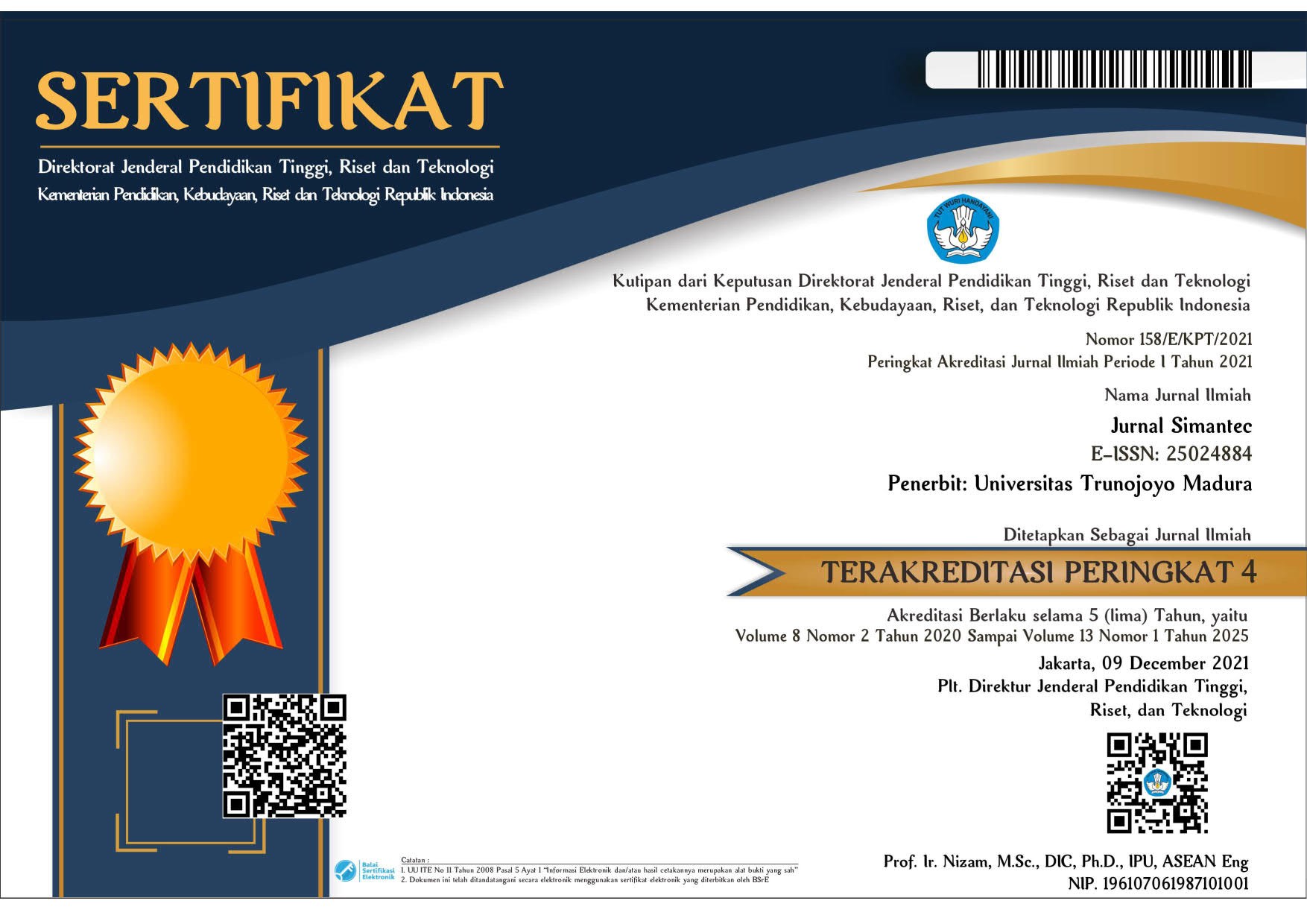Penerapan teknologi blockchain berbasis smart contract untuk meningkatkan keamanan transaksi finansial online
Abstract
The digital transformation in the financial sector demands a transaction system that is not only fast and efficient but also secure and transparent. This study explores the application of blockchain technology as a solution to the problems found in centralized online financial transaction systems that are vulnerable to manipulation. The objective of this research is to design a blockchain-based financial transaction security system architecture that can be evaluated through a conceptual simulation approach. This study uses a descriptive qualitative method with tools such as Ganache, MetaMask, and Remix IDE to simulate smart contract-based transactions within a local blockchain environment. The novelty of this research lies in the integration of a security system modeling approach with realistic scenario-based simulations, which is rarely discussed in previous studies. The research contributes by producing a modular system architecture that integrates key components—users, smart contracts, validators, and regulators—into a cohesive workflow applicable to various digital financial platforms. Simulation results show that the proposed system enhances security, accelerates transaction validation, strengthens auditability, and reduces operational costs compared to conventional transaction systems. This study provides a strong foundation for the broader development of blockchain-based financial systems that are more resistant to external attacks.
Keywords: System Architecture, Blockchain, Transaction Security, Smart Contract, Simulation
Full Text:
PDFReferences
A. Behl, “Blockchain technology in financial services: a comprehensive review of the literature,” Journal of Global Operations and Strategic Sourcing, vol. 14, pp. 61–80, 2021.Doi: https://doi.org/10.1108/JGOSS-07-2020-0039
S. Bin Masud, M. Rana, H. J. Sohag, F. Shikder, and M. R. Faraji, “Understanding the Financial Transaction Security through Blockchain and Machine Learning for Fraud Detection in Data Privacy and Security,” Pakistan Journal of Life and Social Sciences vol. 22, no.2, pp. 17782–17803, 2024. https://doi.org/10.2139/ssrn.5164958
J. Li, M. Lan, Y. Tang, S. Chen, F.-Y. Wang, and W. Wei, “A Blockchain-based Educational Digital Assets Management System,” IFAC-PapersOnLine, vol. 53, no. 5, pp. 47–52, 2020, doi: https://doi.org/10.1016/j.ifacol.2021.04.082
M. Javaid, A. Haleem, R. P. Singh, R. Suman, and S. Khan, “A review of Blockchain Technology applications for financial services,” BenchCouncil Trans. Benchmarks, Stand. Eval., vol. 2, no. 3, p. 100073, 2022, doi: https://doi.org/10.1016/j.tbench.2022.100073
H. Wu, Q. Yao, Z. Liu, B. Huang, Y. Zhuang, H. Tang, and E. Liu, “Blockchain for Finance: a Survey,” arXiv, Feb. 2024. https://doi.org/10.1049/blc2.12067
M. Javaid, A. Haleem, R. P. Singh, R. Suman, and S. Khan, “A review of Blockchain Technology applications for financial services,” BenchCouncil Trans. Benchmarks Stand. Evaluations, vol. 3, p. 100073, 2022. Doi: https://doi.org/10.1016/j.tbench.2022.100073
M. Bahanan and M. Wahyudi, “Analisis Pengaruh Penggunaan Teknologi Blockchain Dalam Transaksi Keuangan Pada Perbankan Syariah,” I’Thisom J. Ekon. Syariah, vol. 2, no. 1, pp. 43–54, 2023. Doi: https://doi.org/10.70412/its.v2i1.42
L. Zhou, “Blockchain in Finance : Enhancing Transparency and Security in Cross-Border Transactions,” vol. 17, no. February, pp. 1–5, 2025. Doi: https://doi.org/10.54254/2977-5701/2025.21075
V. Saxena, “Blockchain-Based Security Architecture For Modern Banking Transactions : A Technical Analysis,” Int. J. Comput. Enginering Tecnol., no. February, 2025. Doi: https://doi.org/10.34218/IJCET_16_01_178
A. Mitawa, “Enhancing Financial Transaction Security With Blockchain Technology,” Educ. Admimistration Theory Pract. J., no. November, 2024. Doi: https://doi.org/10.53555/kuey.v30i5.7508
S. Mao, X., Li, X., & Guo, “A Blockchain Architecture Design that Takes into Account Privacy Protection and Regulation,” Springer Sci. Bus. Media Deutschl. GmbH., 2021, Doi: https://doi.org/10.1007/978-3-030-87571-8_27
R. S. Sangwan, M. Kassab, and C. Capitolo, “Architectural considerations for blockchain based systems for financial transactions,” Procedia Comput. Sci., vol. 168, no. 2018, pp. 265–271, 2020. Doi: https://doi.org/10.1016/j.procs.2020.02.252
C. Nairi, M. Cicioğlu, and A. Çalhan, “Smart blockchain networks: Revolutionizing donation tracking in the Web 3.0,” Comput. Commun., vol. 228, p. 107972, 2024, doi: https://doi.org/10.1016/j.comcom.2024.107972
C. Elliott and L. Timulak, “Essentials of descriptive‑interpretive qualitative research: a generic approach,” Canadian Psychologist, vol. 62, no. 1, pp. 14–25, 2021. Doi: https://doi.org/10.1037/0000224-001
B.-M. Ljungstrom, T. Denk, E. K. Sarenmalm, and U. Axberg, “Use of qualitative comparative analysis (QCA) in an explanatory sequential mixed methods design to explore combinations of family factors that could have an impact on the outcome of a parent training program,” Child. Youth Serv. Rev., vol. 170, p. 108120, 2025, doi: https://doi.org/10.1016/j.childyouth.2025.108120
DOI: https://doi.org/10.21107/simantec.v14i1.29893
Refbacks
- There are currently no refbacks.
Copyright (c) 2025 STEVEN APRIANTO WIRAYUDA
Indexed By
.png)

11.png)













